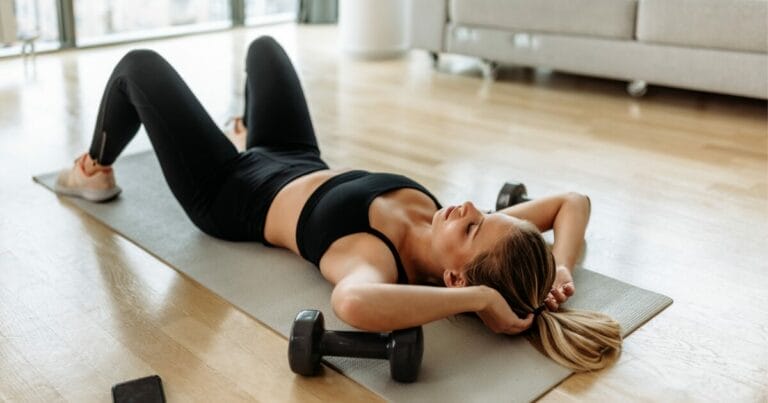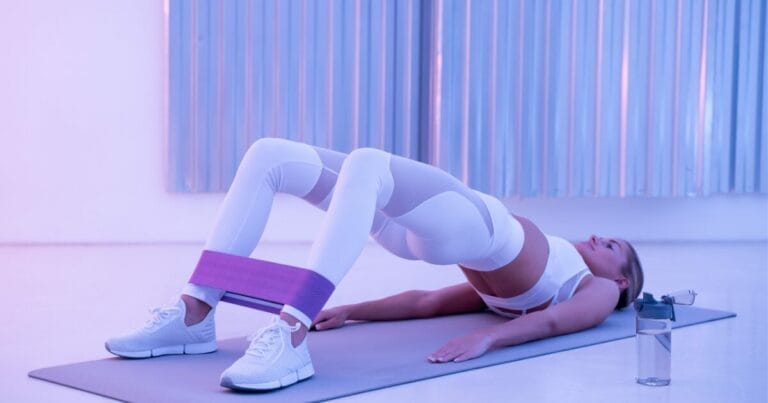Boost Your Game: Athletic Success Through Pelvic Floor Training
In the competitive world of sports, small improvements can make a big difference in winning or losing. A well-rounded training plan is key. One key area that often gets overlooked is pelvic floor muscle training. These muscles are a core part of our body’s movement system and help with stability, strength, and preventing injuries. Although…

In the competitive world of sports, small improvements can make a big difference in winning or losing. A well-rounded training plan is key. One key area that often gets overlooked is pelvic floor muscle training. These muscles are a core part of our body’s movement system and help with stability, strength, and preventing injuries. Although we usually focus on building overall muscle strength and endurance, the importance of the pelvic floor is now being recognized by top athletes and sports medicine experts.
To begin with, it’s crucial to understand how pelvic health affects sports performance. Training these deep muscles can greatly improve an athlete’s abilities. But the big question is: how can athletes include pelvic floor exercises in their training to excel in their sports? And what proof is there that these exercises really work in such a competitive environment?
To answer these questions, let’s dive into the science and benefits of pelvic floor training. It’s essential to realize that just like any other muscle group, the pelvic floor can be strengthened and conditioned to enhance athletic performance. Research has shown that athletes who focus on this area can see improvements in their stability and power, which are vital for success in any sport.
In today’s sports arena, it’s important to keep up with the latest training techniques. Including pelvic floor exercises in your routine can be a game-changer. Remember that these muscles are just as important as your biceps or quads when it comes to your overall athletic ability.
In conclusion, pelvic floor training shouldn’t be an afterthought. It’s a key part of a comprehensive training program that can help athletes reach their full potential. So, if you’re looking to up your game, don’t ignore this powerful tool. Embrace it, and you might just see the difference it makes in your performance.
Key Takeaways
In the realm of sports, even minor enhancements can tip the scales between victory and defeat. A comprehensive training regimen is crucial for success. Often neglected, however, is the training of the pelvic floor muscles—a fundamental component of our body’s kinetic architecture that bolsters stability, strength, and injury prevention. Despite the usual emphasis on general muscle strength and endurance, the significance of the pelvic floor is now acknowledged by leading athletes and sports health professionals.
Firstly, understanding the impact of pelvic health on athletic performance is vital. Strengthening these deep-seated muscles can substantially elevate an athlete’s capabilities. But the pressing issue remains: how can athletes incorporate pelvic floor exercises into their routines to excel in their sports? Moreover, what evidence supports the effectiveness of these exercises in a high-stakes environment?
Let’s delve into the science and advantages of pelvic floor training. Recognizing that these muscles can be fortified and conditioned to boost sports performance is essential. Studies have demonstrated that athletes who train their pelvic floor can experience enhancements in stability and power—both of which are indispensable for triumph in any sport.
In the ever-evolving sphere of athletics, staying abreast of the latest training methods is paramount. Integrating pelvic floor exercises into your regimen could revolutionize your game. Remember, these muscles are equally important as your biceps or quads in terms of athletic prowess.
In conclusion, pelvic floor training should be a central element of a well-rounded training strategy, aiding athletes in reaching their peak performance. If you’re aiming to supercharge your game, don’t overlook this potent strategy. Embrace it, and you may witness a notable difference in your performance.
“Mastering the subtle art of pelvic floor training can propel an athlete from good to exceptional. It’s not just exercise; it’s a strategic edge.”
Understanding Athlete’s Pelvic Dysfunction
Understanding Athlete’s Pelvic Dysfunction
Athletes’ pelvic dysfunction can seriously affect performance and often requires special exercises or treatments. It’s important to know about the pelvic area to spot issues that might hold back an athlete.
The pelvic floor is made up of muscles and tissues that support pelvic organs and help keep the body stable. Problems can show up as poor coordination, weakness, or tiredness in these muscles. This can lead to problems like not being able to control when you go to the bathroom, sexual issues, or ongoing pelvic pain. For athletes who want to do their best, catching these problems early is key. This allows them to start recovery plans that strengthen the pelvic area and improve their overall athletic skills.
When it comes to understanding pelvic dysfunction in athletes, it’s essential to have a clear grasp of the pelvic anatomy to spot signs of trouble that might affect an athlete’s performance. The pelvic floor isn’t just a single muscle, but a web of muscles and tissues that play a big role in supporting the organs in the pelvic area and keeping the body’s core steady. If something goes wrong, like the muscles not working together well, being too weak, or getting tired too quickly, it can have serious side effects. These include issues like not being in control of when you need to use the bathroom, having problems with sexual health, or dealing with pain in the pelvic area that doesn’t go away. For athletes who are serious about their sport, it’s crucial to notice these signs early on. This way, they can start working on recovery methods that build up the strength and stability of their pelvic area, which in turn helps them get better at their sport.
Remember that it’s not just about identifying the problem but also about finding the right way to fix it. Athletes need to dive into recovery plans which not only target the pelvic muscles but also enhance their overall strength and performance. Moreover, seeking advice from healthcare professionals who specialize in sports medicine can provide athletes with top-notch guidance and treatment options.
Pelvic Therapy for Injury Prevention
Pelvic therapy is a smart addition to any athlete’s training plan to help avoid injuries that could keep them out of the game. It’s important to work on the strength and coordination of the pelvic floor. This helps keep the body balanced and moving the way it should, which cuts down on the chance of getting hurt from using the same muscles too much. A strong pelvic floor is the base of a strong core, and that’s needed for the best athletic performance.
Starting pelvic exercises early can help athletes stay away from problems that might need surgery later on. A pelvic therapy program made just for them can be a key part of staying in shape and being able to train well and without injury.
Why Pelvic Therapy Matters
In the world of sports, staying fit and injury-free is crucial. That’s where pelvic therapy comes in. For athletes, having a solid core is like having a strong anchor—it keeps everything else in place. When your pelvic floor is in good shape, your whole body works better. And who doesn’t want that kind of advantage?
Keep It Simple
Remember, it’s not just about doing the exercises; it’s about doing them right. Quality over quantity. Pelvic therapy isn’t just another thing to check off your list—it’s a way to make sure that every other part of your training is building you up, not breaking you down.
Personalized Pelvic Floor Rehab Plans
Every person’s body is different, which means that pelvic floor rehab must be customized to help athletes perform better and avoid injuries. Understanding the pelvic anatomy well is key to making these plans effective. The latest rehab technologies are great for creating precise exercises and tracking improvement.
- Understanding Pelvic Anatomy: A close look at the athlete’s pelvic makeup is necessary to pinpoint any specific weak spots or imbalances.
- Using the Latest Technology: Tools like biofeedback and electromyography bring a new level of accuracy to training and results.
- Building Exercise Programs Step by Step: These programs are adjusted to the athlete’s needs to safely increase pelvic floor strength.
Professionals need a deep understanding of pelvic anatomy and must keep up with new rehab technology. This ensures athletes have the best foundation for reaching their highest potential.
Here’s a closer look at how this works:
- Understanding Pelvic Anatomy: Professionals start by examining the athlete’s pelvic area to find any areas that need strengthening.
- Using the Latest Technology: They then use advanced tools to make the training as effective as possible.
- Building Exercise Programs Step by Step: The exercises are designed to gradually build strength safely.
It’s important for these plans to be made by someone who knows a lot about the pelvic area and how to use the latest technology. This way, athletes can get the most out of their training.
Core Strength: The Athletic Edge
A strong core is key to being a top athlete. It’s not just about six-pack abs, but about the deep muscles that keep your spine and hips stable, helping you balance and move powerfully. It’s essential to work on all your core muscles to prevent injuries and move better. Deep breathing exercises also help by keeping your core tight during physical activity. For athletes who want to be the best, training your core and breathing right are must-dos.
Core Training: Your Athletic Foundation
Imagine your body as a powerhouse, with your core as the engine room. It’s the base from where all your strength and movement start. For any sport, a solid core means you can move with more force and keep your balance even when things get tough.
Why Core Strength Matters
It’s essential for athletes to have a strong core. It helps with nearly every move you make. A strong core can mean the difference between winning and losing. It’s not just for looks—those muscles around your belly and back are what keep you steady and strong when you’re playing sports or working out.
The Role of Breathing
Breathing right is a big part of core training. When you breathe deeply, it helps to keep your core muscles tight. This is especially important when you’re doing something tough, like lifting weights or sprinting.
Building a Balanced Core
You need to work on all the muscles in your core to get the full benefits. This means doing different kinds of exercises, not just crunches. By training your core from every angle, you’ll move better and reduce your chance of getting hurt.
Conclusion
For athletes, a strong core is non-negotiable. It’s what keeps you stable, strong, and fast. With the right exercises and breathing techniques, you can build a core that’s ready for any challenge.
Exercises for Pelvic Muscle Training
For those looking to boost their athletic abilities and avoid injuries, focusing on the pelvic floor muscles is key. These exercises are designed to strengthen muscle coordination and control, which are vital for top performance. Adding proper breathing methods can also help you connect better with your pelvic muscles, leading to more efficient training sessions.
- Kegel Exercises: Focus on isolating and tightening the pelvic floor muscles. Maintain this tension for a few seconds before relaxing. Over time, try to hold the contraction longer.
- Bridge Pose: While keeping your core tight, raise your hips from the ground. Pay special attention to contracting both your glutes and pelvic floor muscles at the same time.
- Deep Squat: Maintaining a deep squat can help fortify your pelvic floor. Coordinate your breathing with moving down and coming up to improve muscle control.
When doing these exercises, precision is paramount. Make sure you’re continually engaging your pelvic floor muscles throughout each movement.
Incorporating these targeted exercises into your routine can significantly improve your physical capabilities in sports and daily activities. Remember to focus on form and breathing to get the most benefit from your workouts.
Pelvic Training in Athletic Routines
Pelvic Training in Athletic Routines
Athletes who include pelvic floor exercises in their daily routines can see a big improvement in their core stability and athletic performance. These exercises also help to prevent injuries. By ensuring proper alignment of the pelvic area, athletes can use their energy more efficiently during fast and powerful movements. This is done by working the deep muscles of the pelvis alongside controlled breathing, which helps to maintain pressure and stability in the abdomen.
Regularly practicing these exercises helps athletes keep up their energy levels and perform at their best. Learning to coordinate the activation of the pelvic floor with breathing techniques is key to building a strong athletic foundation and can give athletes an advantage in their sports.
In the world of sports, it’s crucial to always look for ways to get better and stay ahead of the competition. Pelvic floor training is one of those ways. It’s not just about strength; it’s about smart training that targets the right muscles and uses the right techniques. When athletes understand and apply this training, they’re not just working out smarter; they’re setting themselves up for success on the field, court, or track.
Progress Monitoring for Optimal Recovery
Effective rehabilitation following pelvic floor training hinges on vigilant progress monitoring to ensure optimal recovery trajectories.
By systematically tracking recovery milestones, clinicians can tailor rehabilitation efforts to each athlete’s unique physiological responses and needs.
Assessing physical response through both quantitative metrics and qualitative feedback is crucial in adapting training programs to maximize pelvic floor function and athletic performance.
Tracking Recovery Milestones
Monitoring recovery milestones is crucial for athletes to ensure that pelvic floor training is leading to tangible improvements in strength and function. A well-structured tracking system helps in identifying any persisting muscle imbalance and in optimizing recovery nutrition to support tissue repair and muscle adaptation. This attention to detail facilitates a smarter, more efficient return to peak performance.
Key elements to monitor include:
- Symptomatic Relief: Documenting any changes in symptoms such as incontinence or pelvic pain, which could indicate functional improvements.
- Performance Metrics: Measuring improvements in sports-specific drills that require core stability.
- Physiological Markers: Regularly assessing pelvic floor muscle strength through biofeedback and other clinical measures to ensure proper muscle engagement and balance.
Incorporating these tracking methods will empower athletes with the insight necessary for a strategic and successful recovery process.
Assessing Physical Response
To effectively evaluate the benefits of pelvic floor exercises for athletes, it’s crucial to thoroughly examine how their bodies react. This isn’t just about getting them back in the game sooner; it’s about doing it safely and sustainably.
We start by taking a close look at the pelvic area to see how the training affects things like muscle strength, stamina, and how well these muscles work with others in the body’s movement system. We use tools like electromyography, or EMG for short, to measure muscle activity and tiredness. Ultrasound gives us a live look at the muscles to make sure they’re contracting properly.
These methods give us a clear picture of the athlete’s physical condition and show us how it changes with training. Then we can update their exercise program based on solid evidence, which means it’s specifically designed for their needs. This approach to pelvic floor rehab is not only smart but backed up by science.
Remember that the goal is to improve the athlete’s recovery and performance. By embracing innovative technology and leveraging scientific data, we can enhance their training in a way that’s both effective and personalized. Navigating the complexities of the human body requires expertise and precision, and that’s exactly what we aim to provide. Unveil the potential of each athlete with a targeted and informed strategy. We’ve got you covered with the latest methods to ensure the best outcomes.
In today’s competitive world, it’s not enough to just train harder; athletes need to train smarter. And with this detailed, data-driven approach to physical response assessment, they can do just that.
Frequently Asked Questions
How Does Pelvic Floor Training Influence Hormonal Balance in Athletes?
Training the pelvic floor is crucial for athletes, as it can play a role in balancing hormones. This type of training improves the strength and stability of the core muscles and enhances the communication between the nervous system and muscles. Strong core muscles are essential for athletes, as they provide the stability needed for high-level performance. Additionally, a well-coordinated neuromuscular system allows for more efficient movement, which can reduce the risk of injury.
By improving these physical aspects, pelvic floor training might also impact hormone levels. Hormones that are associated with stress, such as cortisol, could be affected. When an athlete’s body is better able to handle the demands of their sport, the stress response can be mitigated, potentially leading to a more balanced hormonal state.
Furthermore, a stable hormonal environment can contribute to better physical adaptation to training, recovery, and overall athletic performance. It’s important for athletes to understand that their body is an interconnected system where physical training can have broader effects, including on hormonal health.
Can Pelvic Floor Training Improve Sexual Function or Health for Athletes?
Could training the pelvic floor muscles lead to better sexual health for athletes? It seems that focusing on this area not only helps with physical performance but also plays a part in enhancing sexual function. This improvement can contribute to better intimacy experiences and may even support prostate health—important aspects for athletes who value all-around wellness and top performance levels.
Firstly, let’s consider the connection between the pelvic floor and sexual function. The pelvic floor muscles play a key role in sexual activity, and strengthening them can lead to increased sensitivity and better control during intimate moments. This can lead to a more satisfying sex life, which is an important component of overall well-being.
Secondly, it’s not just about sexual pleasure. A strong pelvic floor is also linked to good prostate health, which is essential for male athletes. By training these muscles, men may reduce the risk of developing prostate issues, which can sideline an athlete’s career and impact their quality of life.
In conclusion, pelvic floor training offers a range of benefits that go beyond the sports field. For athletes, paying attention to this part of the body can enhance their performance in more ways than one. It is important for athletes to consider all aspects of their health, including sexual health, as part of their training regimen.
Remember that while pelvic floor training is beneficial, it should be done correctly and with proper guidance. Athletes interested in this type of training should seek out a professional to ensure they’re performing exercises safely and effectively.
Are There Any Risks of Overtraining the Pelvic Floor Muscles, and How Can They Be Mitigated?
Training your pelvic floor muscles too much can cause them to get tired and not work properly. To avoid this, it’s important to exercise in moderation and make sure you have a well-rounded workout plan. Rest is also key to letting your muscles recover and to stop bad effects from happening.
Let’s dive into this topic. Firstly, it’s crucial to understand that your body needs balance. Just like you wouldn’t work out your arms every day without rest, the same goes for your pelvic floor. It’s about finding the right amount of exercise and not going overboard.
Secondly, remember to include a mix of activities in your routine. This helps to make sure all your muscles are getting the attention they need, not just your pelvic floor. And don’t forget the value of rest. It’s during these periods of downtime that your muscles repair themselves.
How Does Pelvic Floor Strength Correlate With Mental Health and Stress Management in High-Performance Athletes?
In the world of high-performance sports, mental health has become as critical as physical fitness. Athletes looking for an edge should consider the benefits of pelvic floor strength—not only for physical well-being but also for mental clarity and stress management.
Firstly, a strong pelvic floor can enhance an athlete’s resilience against stress. This is because having control over these core muscles can provide a sense of stability. It’s similar to having a solid foundation in a building; it supports everything else above it. Consequently, for athletes facing the pressure of competition, maintaining pelvic floor strength could be key to staying focused and calm when it counts.
Moreover, in today’s ever-evolving sports environment, managing stress is not just about physical preparation but also about mental readiness. By reinforcing their pelvic floor muscles, athletes might find they are better able to handle the psychological demands of their sport. It’s like unlocking a new level of mental toughness that can help them navigate through the intense moments of a game or match.
Remember that the correlation between the pelvic floor and mental health is a subject worthy of further exploration. As research delves deeper into how these areas are connected, we may discover more about how athletes can leverage this knowledge to supercharge their performance.
Is There a Difference in the Approach to Pelvic Floor Training for Athletes in Water Sports Compared to Those in Land-Based Sports?
Athletes participating in water sports benefit from the water’s natural buoyancy when they train their pelvic floor. This requires specific techniques tailored to the aquatic environment. On the other hand, athletes in land sports have to focus on training that is specific to their sport. They need to prepare for the different levels of impact and the variety of movements they will encounter on solid ground.
When training the pelvic floor for water sports, it’s essential to understand how being in water changes the way muscles work. The water supports the body, so exercises that might be challenging on land become easier in water. This allows for a unique set of exercises that can strengthen the pelvic floor without the same strain or stress.
In contrast, land-based athletes must adapt their pelvic floor training to deal with the forces they’ll face during their activities. For example, a runner needs to fortify the pelvic floor against the repetitive impact of feet hitting the pavement. Each sport will have different demands, so the training must be customized accordingly.
It’s crucial for all athletes to have a strong and well-trained pelvic floor. It helps with core stability, which is vital for both performance and injury prevention. By addressing the unique needs of water and land sports, athletes can ensure they’re getting the most out of their training.
Custom quote: “To excel in any sport, embracing the nuances of pelvic floor training is as vital as the sport itself—whether buoyed by water or grounded on land.”







